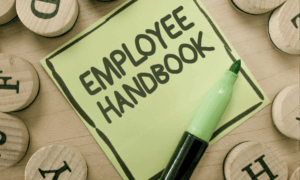As part of sweeping legislation—the Families First Coronavirus Response Act (FFCRA)—signed into law by President Trump on March 18, 2020, two laws were enacted that provide workers with paid leave for reasons related to the coronavirus (COVID-19) pandemic.
- The “Emergency Family and Medical Leave Expansion Act” allows 12 weeks of partially compensated FMLA leave to care for a child whose school or child care facility has been closed due to COVID-19.
- The “Emergency Paid Sick Leave Act” requires employers to provide 80 hours of paid sick time to employees in specified circumstances related to COVID-19 exposure and prevention.
As required by this legislation, the U.S. Department of Labor (DOL) will be issuing implementing regulations. Additionally, as warranted, the DOL will continue to provide compliance assistance to employers and employees on their responsibilities and rights under the FFCRA.
The DOL issued the following questions and answers (Q&As) as part of these efforts.
- “Paid sick leave” means paid leave under the
Emergency Paid Sick Leave Act. - “Expanded family and medical leave” means paid
leave under the Emergency Family and Medical Leave Expansion Act.
Questions and Answers
1. What is the effective date of the FFCRA, which includes the Emergency Paid Sick Leave Act and the Emergency Family and Medical Leave Expansion Act?
The FFCRA’s paid leave provisions are effective on April 1, 2020, and apply to leave taken between April 1, 2020, and Dec. 31, 2020.
2. As an employer, how do I know if my business is under the 500-employee threshold and therefore must provide paid sick leave or expanded family and medical leave?
An employer has fewer than 500 employees if, at the time an employee’s leave is to be taken, the employer employs fewer than 500 full-time and part-time employees within the United States (including any state, the District of Columbia, or any territory or possession of the United States). In making this determination, employers should include:
- Employees on leave;
- Temporary employees who are jointly employed by the
employer and another employer (regardless of whether the jointly-employed
employees are maintained on only one employer’s payroll); and - Day laborers supplied by a temporary agency
(regardless of whether the employer is the temporary agency or the client firm
if there is a continuing employment relationship).
Workers who are independent contractors under the Fair Labor Standards Act (FLSA), rather than employees, are not considered employees for purposes of the 500-employee threshold.
Typically, a corporation (including its separate establishments or divisions) is considered to be a single employer, and its employees must each be counted towards the 500-employee threshold. Where a corporation has an ownership interest in another corporation, the two corporations are separate employers unless they are joint employers under the FLSA with respect to certain employees. If two entities are found to be joint employers, all of their common employees must be counted in determining whether paid sick leave must be provided under the Emergency Paid Sick Leave Act, and expanded family and medical leave must be provided under the Emergency Family and Medical Leave Expansion Act.
In general, two or more entities are separate employers unless they meet the integrated employer test under the Family and Medical Leave Act (FMLA). If two entities are an integrated employer under the FMLA, then employees of all entities making up the integrated employer will be counted in determining employer coverage for purposes of expanded family and medical leave under the Emergency Family and Medical Leave Expansion Act.
3. If I am a private sector employer and have 500 or more employees, do the Acts apply to me?
No. Private sector employers are only required to comply with the Acts if they have fewer than 500 employees.
Federal employees are eligible to take paid sick leave under the Emergency Paid Sick Leave Act. However, only some federal employees are eligible to take expanded family and medical leave under the Emergency Family and Medical Leave Expansion Act. An employee’s eligibility will depend on whether they are covered under Title I or Title II of the FMLA. The DOL encourages federal employees to discuss questions about their eligibility for expanded family and medical leave with their employers or with the Office of Personnel Management. Additional FAQs regarding public sector employers will be forthcoming.
4. If providing child care-related paid sick leave and expanded family and medical leave at my business with fewer than 50 employees would jeopardize the viability of my business as an ongoing concern, how do I take advantage of the small business exemption?
To elect this small business exemption, you should document why your business with fewer than 50 employees meets the criteria set forth by the DOL, which will be addressed in more detail in forthcoming regulations. You should not send any materials to the DOL when seeking a small business exemption for paid sick leave and expanded family and medical leave.
5. How do I count hours worked by a part-time employee for purposes of paid sick leave or expanded family and medical leave?
A part-time employee is entitled to leave for his or her average number of work hours in a two-week period. Therefore, you calculate hours of leave based on the number of hours the employee is normally scheduled to work. If the normal hours scheduled are unknown, or if the part-time employee’s schedule varies, you may use a six-month average to calculate the average daily hours. Such a part-time employee may take paid sick leave for this number of hours per day for up to a two-week period, and may take expanded family and medical leave for the same number of hours per day up to ten weeks after that.
If this calculation cannot be made because the employee has not been employed for at least six months, use the number of hours that you and your employee agreed that the employee would work upon hiring. If there is no such agreement, you may calculate the appropriate number of hours of leave based on the average hours per day the employee was scheduled to work over the entire term of his or her employment.
6. When calculating pay due to employees, must overtime hours be included?
Yes. The Emergency Family and Medical Leave Expansion Act requires you to pay an employee for hours the employee would have been normally scheduled to work even if that is more than 40 hours in a week.
However, the Emergency Paid Sick Leave Act requires that paid sick leave be paid only up to 80 hours over a two-week period. For example, an employee who is scheduled to work 50 hours a week may take 50 hours of paid sick leave in the first week and 30 hours of paid sick leave in the second week. In any event, the total number of hours paid under the Emergency Paid Sick Leave Act is capped at 80.
If the employee’s schedule varies from week to week, please see the answer to Question 5, because the calculation of hours for a full-time employee with a varying schedule is the same as that for a part-time employee.
Please keep in mind the daily and aggregate caps placed on any pay for paid sick leave and expanded family and medical leave as described in the answer to Question 7.
Please note that pay does not need to include a premium for overtime hours under either the Emergency Paid Sick Leave Act or the Emergency Family and Medical Leave Expansion Act.
7. As an employee, how much will I be paid while taking paid sick leave or expanded family and medical leave under the FFCRA?
It depends on your normal schedule as well as why you are taking leave.
If you are taking paid sick leave because you are unable to work or telework due to a need for leave because you: (1) are subject to a federal, state or local quarantine or isolation order related to COVID-19; (2) have been advised by a health care provider to self-quarantine due to concerns related to COVID-19; or (3) are experiencing symptoms of COVID-19 and are seeking medical diagnosis, you will receive for each applicable hour the greater of:
- Your regular
rate of pay; - The federal minimum wage in effect under the
FLSA; or - The applicable state or local minimum wage.
In these circumstances, you are entitled to a maximum of $511 per day, or $5,110 total, over the entire paid sick leave period.
If you are taking paid sick leave because you are: (1) caring for an individual who is subject to a federal, state or local quarantine or isolation order related to COVID-19 or an individual who has been advised by a health care provider to self-quarantine due to concerns related to COVID-19; (2) caring for your child whose school or place of care is closed, or child care provider is unavailable, due to COVID-19 related reasons; or (3) experiencing any other substantially similar condition that may arise, as specified by the Secretary of Health and Human Services (HHS), you are entitled to compensation at two-thirds of the greater of the amounts above. Under these circumstances, you are subject to a maximum of $200 per day, or $2,000 over the entire two week period.
If you are taking expanded family and medical leave, you may take paid sick leave for the first 10 days of that leave period, or you may substitute any accrued vacation leave, personal leave, or medical or sick leave you have under your employer’s policy. For the following 10 weeks, you will be paid for your leave at an amount no less than two-thirds of your regular rate of pay for the hours you would be normally scheduled to work. The regular rate of pay used to calculate this amount must be at or above the federal minimum wage, or the applicable state or local minimum wage. However, you will not receive more than $200 per day or $12,000 for the 12 weeks that include both paid sick leave and expanded family and medical leave when you are on leave to care for your child whose school or place of care is closed, or child care provider is unavailable, due to COVID-19 related reasons.
To calculate the number of hours for which you are entitled to paid leave, please see the answers to Questions 5-6 that are provided in this guidance.
8. What is my regular rate of pay for purposes of the FFCRA?
For purposes of the FFCRA, the regular rate of pay used to calculate your paid leave is the average of your regular rate over a period of up to six months prior to the date on which you take leave.[1] If you have not worked for your current employer for six months, the regular rate used to calculate your paid leave is the average of your regular rate of pay for each week you have worked for your current employer.
If you are paid with commissions, tips or piece rates, these wages will be incorporated into the above calculation.
You can also calculate this amount for each employee by adding all compensation that is part of the regular rate over the above period and divide that sum by all hours actually worked in the same period.
9. May I take 80 hours of paid sick leave for my self-quarantine and then another amount of paid sick leave for another reason provided under the Emergency Paid Sick Leave Act?
No. You may take up to two weeks—or 10 days—(80 hours for a full-time employee or, for a part-time employee, the number of hours equal to the average number of hours that the employee works over a typical two-week period) of paid sick leave for any combination of qualifying reasons. However, the total number of hours for which you receive paid sick leave is capped at 80 hours under the Emergency Paid Sick Leave Act.
10. If I am home with my child because his or her school or place of care is closed, or child care provider is unavailable, do I get paid sick leave, expanded family and medical leave, or both—how do they interact?
You may be eligible for both types of leave, but only for a total of 12 weeks of paid leave. You may take both paid sick leave and expanded family and medical leave to care for your child whose school or place of care is closed, or child care provider is unavailable, due to COVID-19 related reasons. The Emergency Paid Sick Leave Act provides for an initial two weeks of paid leave. This period, thus, covers the first 10 workdays of expanded family and medical leave, which are otherwise unpaid under the Emergency and Family Medical Leave Expansion Act unless you elect to use existing vacation, personal, or medical or sick leave under your employer’s policy. After the first 10 workdays have elapsed, you will receive two-thirds of your regular rate of pay for the hours you would have been scheduled to work in the subsequent 10 weeks under the Emergency and Family Medical Leave Expansion Act.
Please note that you can only receive the additional 10 weeks of expanded family and medical leave under the Emergency Family and Medical Leave Expansion Act for leave to care for your child whose school or place of care is closed, or child care provider is unavailable, due to COVID-19 related reasons.
11. Can my employer deny me paid sick leave if my employer gave me paid leave for a reason identified in the Emergency Paid Sick Leave Act prior to the Act going into effect?
No. The Emergency Paid Sick Leave Act imposes a new leave requirement on employers that is effective beginning on April 1, 2020.
12. Is all leave under the FMLA now paid leave?
No. The only type of family and medical leave that is paid leave is expanded family and medical leave under the Emergency Family and Medical Leave Expansion Act when such leave exceeds 10 days. This only includes leave taken because the employee must care for a child whose school or place of care is closed, or child care provider is unavailable, due to COVID-19 related reasons.
13. Are the paid sick leave and expanded family and medical leave requirements retroactive?
No.
14. How do I know whether I have “been employed for at least 30 calendar days by the employer” for purposes of expanded family and medical leave?
You are considered to have been employed by your employer
for at least 30 calendar days if your employer had you on its payroll for the
30 calendar days immediately prior to the day your leave would begin. For
example, if you want to take leave on April 1, 2020, you would need to have
been on your employer’s payroll as of March 2, 2020.
If you have been working for a company as a
temporary employee, and the company subsequently hires you on a full-time
basis, you may count any days you previously worked as a temporary employee
toward this 30-day eligibility period.
If you are a federal employee, the state or local minimum wage would be used to calculate the wages owed to you only if the federal agency that employs you has broad authority to set your compensation and has decided to use the state or local minimum wage.






